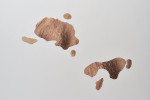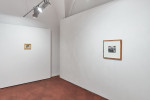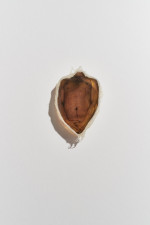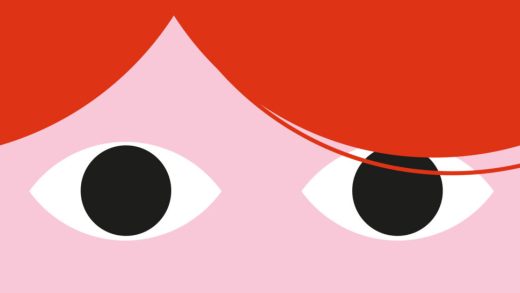opening: 10.10.2017, 7 PM
exhibition until 10.11.2017
organizers:
Piekary Gallery
św. Marcin 80/82
61-809 Poznań
CK Zamek, Dziedziniec Różany

![]()
exhibition open Mon-Fri, 10 AM – 6 PM
free entry
“The world is flesh”
Susan Sontag, Diaries
The works at the exhibition, following a string of associations—as Susan Sontag did so often in her Diaries—bring alive a concatenation of words and notions, such as: (un)human, meatiness, decay, (non)sanctity, (de)naturalization, tremor, time-dearth, examination, immortalization, imprisonment, (in)finiteness, sensuality, airlessness, feeling, life, process… Kuzyszyn underlines: body is what one is.
“The exhibition is the first of a series of projects which is a sense recapitulate my oeuvre, from the perspective of the body and its varied, possible connotations. As I reviewed the works from a more distant periods, which nevertheless remain very important to me, I decided to confront them with the new ones. Displayed at the exhibition there are two versions of the controversial yet fundamental piece of mine: Collegium Anatomicum. A recent series—Exuviae—can be found there as well. All are concerned with the human body, its condition approached from a metaphysical, semantic and aesthetic perspective. One day, a phrase read in Susan Sontag’s Diaries ingrained itself in my mind: “The world is flesh”, she wrote. The human being is body, and it is that very standpoint which determines their perception of reality, not only the visible one, while the predominance of the human figure in most representations of visual culture evinces that quite palpably.
Collegium Anatomicum is a singularly special work for me. The first version, dating to the late 1988 – early 1989 comprises photographic material captured in Łódź at an institution whose name is identical with the title of the series. The experience which accompanied that visit was so powerful, so brutal, profound and beautiful at the same time, that it left an extraordinary trace within. The reflection that the experience engendered moulded my view of reality anew. The images harbour a potent force by virtue of the total figure of the corpse. The series consists of 30 black-and-white photographs showing human anatomic preparations, presented as an installation. The second visit at the site, 28 years later, in 2016, brought forth a record obtained by means of a mobile phone (since use of any other devices was not permitted). This series of colour photographs features similar shots of the same preparations. Colour, however, offers an aesthetic counterpoint here, softens the mood of the portrayal, and anchors the photographs more firmly in the contemporary iconosphere. They are presented in a format larger than previously and rely on the Diasec technology; the materiality of the print brings the viewer closer to the actual object.
Exuviae is a series of latex or PVC casts, which then become objects used in photographic sessions, especially those where the human figure is the model. Here, the flesh-coloured latex is a skin synthetic, additionally entangled in the interpenetrability of symbols of contemporary culture (in e.g. Ken’s Exuvium, Pears). Exuvium – Tray represents a different case, where the cast was made using a processing tray. This archetypal object and symbol of classical photography is something I feel closely attached to. The indispensable utensil of working in the darkroom becomes a fetish of a bygone era, and simultaneously a semantically capacious, abstract motif. The PVC cast of the tray morphed from a strictly photographic attribute to a vessel for hygienic rituals, with a slightly perverse overtone to it.
The exhibition also includes untitled (2016-2017), in which the photograph of my own skin assumes unorthodox, irregular forms, enabling any spatial arrangement within the work. I strip the photographs of the so-called frame, releasing the potential of random shape. A banal photographic motif, isolated by the obtuse outline of each element, appears to be devoid of gravity. It becomes an aesthetically alluring form which, when approached and viewed with focused attention exposed aging processes affecting the surface of the body, its undermined and depleted structure and features. The glossy sheen of the resin surface lends them vividness, giving rise to object-like form of the image.”
Konrad Kuzyszyn
Konrad Kuzyszyn was born in 1961 in Białystok. From 1985 to 1990, Kuzyszyn studied at the Faculty of Graphic Art and Painting at the State Higher School of Plastic Arts in Łódź, obtaining his diploma in arts at Professor A. Bartczak’s Studio of Letterpress Printing, at the Studio of Metalworking Techniques with Professor L. Rózga and at the Photography Studio, supervised by Professor I. Pierzgalski. In 1993-2001, the artist worked as assistant lecturer, and subsequently became head of the Studio of Photography and Video Image at the Strzemiński Academy of Art in Łódź, making continuous efforts to establish a Department of Multimedia there. In 2007-2012, Kuzyszyn also ran the Studio of Digital Creation at the Academy of Fine Arts in Cracow. In 1998, he was conferred the doctorate in fine arts, and obtained his postdoctoral degree in 2002, at the Academy of Fine Arts in Poznań.
At present, Kuzuszyn is the head of the Studio of Photography #5 at the University of Arts in Poznań, where he became Associate Professor in 2007; 2012 saw him obtain the title of full Professor. His interests include photography, video, and hybrids of contemporary electronic media. His achievements have been recognized by fellowships awarded by Nordrhein-Westfalen (Cologne 1998) and the Minister of Culture and National Heritage (2002).
Selected solo exhibitions:
– CIAŁOSTAN, Olimpus Gallery, Łódź 2016
– STĄD/WSTECZ, Arsenał Gallery, Białystok 2015
– Urywki, Mała Czarna, Academy of Fine Arts, Łódź 2014
– Niepokazanie, Palonka Gallery, Chicago 2012
– Potencjały, PLATAN Gallery, Budapest 2003
– Puste Wnętrze, Zachęta National Gallery of Art, Warsaw 2000
– Prace, Sielska Gallery, Strasburg 1999
– Nowe Obiekty, ON Gallery, Poznań 1997
– Obiekty bycia, FF Gallery, Łódź 1996
– Rezultaty, Mała Galeria, Association of Polish Art Photographers /Center for Contemporary Art, Warsaw 1996
– EXIsT, Mała Galeria, Association of Polish Art Photographers / Center for Contemporary Art, Warsaw 1992
– Adrenalina, Arsenał Gallery, Białystok 1992
– Retrospekcje-Introspekcje, FF Gallery, Łódź 1991
Selected collective shows:
– Fotografia kolekcjonerska: RZECZY. Przedmiot i obiekt w polskiej fotografii, Photography Month Festival, Starmach Gallery, Kraków 2017
– Medycyna w sztuce, MOCAK, Kraków 2016
– Wyborny trup fotografii polskiej, BWA Awangarda, Wrocław 2015
– 6 x 3 = 25, Piekary Gallery, Poznań 2014
– STILL ON, Former Synagogue, Poznań 2012
– Oh no! Not Sex And Death Again! Fotografia z kolekcji Cezarego Pieczyńskiego, State Gallery of Art, Sopot 2010
– Antypody umysłu, Manhattan Gallery, Łódź 2008
– Medium… Post… Mortem…, Centre Wallon d’Art Contemporain, la Chataignerale, Liege 2007; The National Museum of Szczecin, Szczecin 2007
– Panopticon, Kulturforum Burgkloster, Lubeck 2006
– Two Asias, Two Europes – International Exhibition of Contemporary Art, Shanghai Duolun Museum of Modern Art, Shanghai 2005
– Fragmentaryczna Identyfikacja, Apolonia Space, Strasbourg 2004; Thessaloniki Museum of Photography, Thessaloniki 2004; The National Museum, Szczecin 2004
– Niebezpieczne związki sztuki z ciałem, Arsenał Municipal Gallery, Poznań 2002
– IN BETWEEN. Art From Poland 1945-2000, Chicago Cultural Center, Chicago 2001
– TOYAMA NOW’99, Museum of Modern Art, Toyama 1999
– Łódzki Progresywny Ruch Artystyczny, Państwowa Galeria Sztuki Zachęta, Warszawa 1997
– Fotografia: wehikuł sztuki, tworzywo sztuki, Bunkier Sztuki Gallery, Cracow 1996
– ANTYCIAŁA, Centre for Contemporary Art Ujazdowski Castle, Warsaw 1995
– Polska Fotografia Współczesna, Centre for Contemporary Art Ujazdowski Castle, Warsaw 1994
– Zmiana warty. Wystawa Młodej Fotografii Polskiej, FF Gallery, Łódź 1991
media patronage:



![]()

















